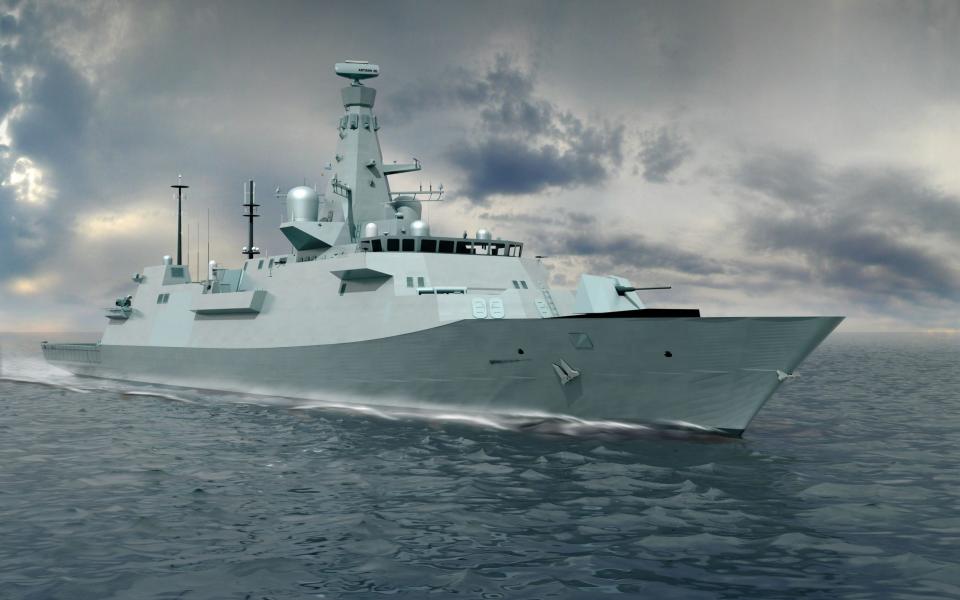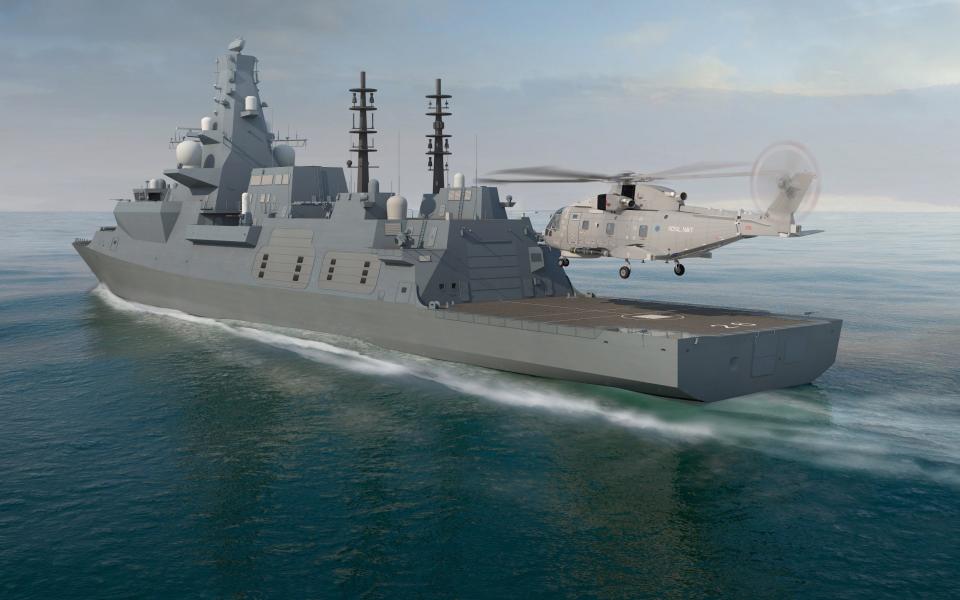How the Royal Navy’s new warships ended up delayed and over budget – again

When built, Britain’s Type 26 warship is expected to be the world’s most advanced submarine hunter.
But its construction continues to be plagued by delays – the latest of which has added £233m to the bill for taxpayers.
“When will we finally get a grip on this programme?” Mark Francois, the chairman of the European Research Group, asked the government during a recent Commons Defence Select Committee.
The Type 26 programme began 28 years ago under what was then known as the Future Surface Combatant. In 2010, BAE Systems was awarded a four-year, £127m contract to design the ship.
The first frigate had been due to enter service from 2020 to replace the 1980s-era Type 23 class. In 2016, that date was pushed to 2025.
Three of the submarine hunters are now being built in Glasgow, with the first of class, HMS Glasgow, initially expected to be with the Royal Navy in 2027. That date has now been moved to October 2028. In total, the programme has cost just over £8bn.
Ben Wallace, the defence secretary, has admitted that he’s “pretty upset” by the ongoing challenges.
“On the gearbox: there was a failure in the test bed, which delayed it,” he said, when quizzed by the Defence Select Committee earlier this month. “It did not come to my attention for two years: it was 20 months late by the time the Navy brought it to my attention.
“Some of it is Covid and some of it is supply chain challenges.”
Charles Woodburn, chief executive of BAE Systems, which is building the ships at its yard at Govan, near Glasgow, says the gearbox incorporated new submarine technology.
“To take that technology and convert it for a surface ship environment, actually turned out to be, I think, harder than anybody expected,” he says.

Because the ship is being constructed in layers, with the gearbox towards the bottom, the late piece of equipment had to be added through a hole in the side of the ship.
“Now, the combination of Covid plus the gearbox was about a 12 month total delay on the first-in-class ship. We're not happy with that, and we're obviously doing whatever we can to recover the commitment that we have made,” says Woodburn.
Pete Sandeman, an analyst at Navy Lookout, claims the delays are partly down to the frigates being the first in their class.
“I would expect to see the second one slightly faster,” he says. “They have committed to building a larger covered shipbuilding hall, so that will mean the subsequent five vessels will also probably be slightly more efficiently built.”
The warship’s advanced sensors and missile systems have also slowed down its development.
Each Type 26 will be equipped with the Sea Ceptor missile defence system, a five inch gun, a Merlin or Wildcat helicopter, medium-range radar and array sonars and a mission bay designed to accommodate drones and other novel weapons platforms.
Everything from engine vibration to the sound of water flowing through pipes must be considered during its design, says Sandeman.
“It has to be shock resistant, has to be subdivided for damage control,” he says. “There's all sorts of other things that are going on with a Type 26.”
Sandeman also blames indecision and budget issues at the Ministry of Defence (MoD). The longer a programme like this goes on for, the more tweaks are made and the longer the delays, creating a vicious cycle, he says.
“With the Type 26, there was a very long gestation period of 19 years,” said industrialist Sir John Parker during a defence committee hearing in May.
“If you examine the timescale, a lot of it was due to the way finance in the Treasury – that is, finance in the MoD – works, in that it is a complete cash pool. If you’re running short of cash for ammunition, or whatever, you pull it out of projects.”
Sir John has previously been critical of the constant tinkering of big shipbuilding projects caused by yearly budgets and changing governments. It seems lessons have now been learned for the Type 31s, which are being built by rival shipbuilder Babcock at Rosyth, near Edinburgh.
The Type 31s will be lighter and stripped-down general purpose frigates compared to the Type 26, but at a fraction of the cost, at about £250m apiece. By contrast the latest batch of five Type 26 will cost £840m each.
Other countries have similar problems of delay and expense, although “we've created problems for ourselves by kind of having a feast and famine, sort of approach to shipbuilding,” says Sandeman.
With Russian submarines, including the top-secret Belgorod cruise missile vessel sneaking about the world’s oceans, the need for Type 26 frigates is growing increasingly urgent.
The threat has prompted Rishi Sunak to invest an additional £4.2bn to the programme, with five new ships added to the three already ordered. For now, all are expected to be operational by the middle of the next decade.
“The Type 26 programme remains on track to deliver eight cutting-edge warships, bolstering our anti-submarine warfare capabilities into the 2060s,” according to a spokesman from the MoD.
BAE is confident of speeding up the Type 26 programme for later ships, bringing it back on target.
By the time the third and final ship of the first batch is complete, Woodburn insists the company will be back on track.
“We're working very hard and the shipyard is working very hard to make sure that we can recover.”

 Yahoo Finance
Yahoo Finance 